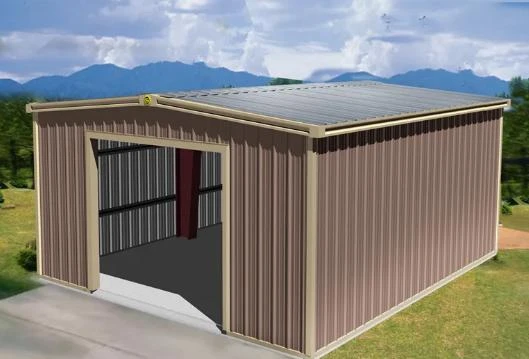- Afrikaans
- Albanian
- Amharic
- Arabic
- Armenian
- Azerbaijani
- Basque
- Belarusian
- Bengali
- Bosnian
- Bulgarian
- Catalan
- Cebuano
- Corsican
- Croatian
- Czech
- Danish
- Dutch
- English
- Esperanto
- Estonian
- Finnish
- French
- Frisian
- Galician
- Georgian
- German
- Greek
- Gujarati
- Haitian Creole
- hausa
- hawaiian
- Hebrew
- Hindi
- Miao
- Hungarian
- Icelandic
- igbo
- Indonesian
- irish
- Italian
- Japanese
- Javanese
- Kannada
- kazakh
- Khmer
- Rwandese
- Korean
- Kurdish
- Kyrgyz
- Lao
- Latin
- Latvian
- Lithuanian
- Luxembourgish
- Macedonian
- Malgashi
- Malay
- Malayalam
- Maltese
- Maori
- Marathi
- Mongolian
- Myanmar
- Nepali
- Norwegian
- Norwegian
- Occitan
- Pashto
- Persian
- Polish
- Portuguese
- Punjabi
- Romanian
- Russian
- Samoan
- Scottish Gaelic
- Serbian
- Sesotho
- Shona
- Sindhi
- Sinhala
- Slovak
- Slovenian
- Somali
- Spanish
- Sundanese
- Swahili
- Swedish
- Tagalog
- Tajik
- Tamil
- Tatar
- Telugu
- Thai
- Turkish
- Turkmen
- Ukrainian
- Urdu
- Uighur
- Uzbek
- Vietnamese
- Welsh
- Bantu
- Yiddish
- Yoruba
- Zulu
Nov . 13, 2024 09:26 Back to list
The Advantages of Light Gauge Steel Frame Structures
Light gauge steel frame structures have emerged as a popular choice in modern construction due to their numerous advantages over traditional building materials. This innovative building method involves the use of thin steel sections, typically galvanized, which provide structural support while being lightweight and cost-effective. This article explores the benefits, applications, and considerations associated with light gauge steel frame construction.
Strength and Durability
One of the primary benefits of light gauge steel framing is its exceptional strength-to-weight ratio. Steel is inherently strong, and when formed into thin sections, it offers impressive load-bearing capabilities. This strength allows for larger spans and open floor plans, which are increasingly desirable in commercial and residential design. Moreover, steel doesn’t warp, crack, or shrink over time, enabling structures to maintain their integrity and appearance after construction.
In addition, light gauge steel is resistant to common problems associated with traditional materials, such as rot, pests, and weather-related damage. This resistance prolongs the lifespan of the structure and reduces maintenance costs. When properly treated, steel can withstand corrosion, making it suitable for various environments, including those that are humid or exposed to saltwater.
Lightweight and Cost-Effective
The lightweight nature of light gauge steel frames translates to lower transportation and handling costs. This also facilitates quicker construction times, as the components can be easily maneuvered and assembled on site. Reduced weight often means less extensive foundation requirements, leading to savings in both materials and labor.
Moreover, because light gauge steel is produced in factory settings, the fabrication process is typically more efficient than that of traditional materials. This precision manufacturing leads to reduced waste and helps to minimize the environmental impact of construction projects. By opting for steel, builders can also take advantage of potential cost savings in both the short and long term.
Design Flexibility
Light gauge steel framing offers remarkable design flexibility, allowing architects and builders to innovate and customize structures according to specific requirements. Designers can create a wide variety of shapes and sizes, accommodating aesthetics such as curved walls or large openings without compromising structural integrity. This adaptability is especially beneficial in contemporary architecture, where unique designs are often sought.
light gauge steel frame structure

Furthermore, light gauge steel can easily be integrated with other materials, such as glass, wood, or concrete. This versatility allows for endless design possibilities, making it ideal for a range of applications, from residential homes to commercial buildings and industrial facilities.
Sustainability
Sustainability is a significant consideration in modern construction, and light gauge steel frames align well with eco-friendly practices. Steel is highly recyclable, with many structures containing a significant percentage of recycled content. At the end of their life cycle, steel frames can be effectively reused or recycled, thereby minimizing waste and promoting a circular economy.
Additionally, the ability to construct energy-efficient buildings is enhanced with light gauge steel, as it can easily accommodate insulation and energy-efficient systems. The design can promote effective energy use, contributing to lower operating costs and a reduced environmental footprint over the building’s life.
Challenges and Considerations
Despite their many advantages, light gauge steel frame structures also have some challenges that builders need to consider. The main issue is thermal conductivity; steel can transfer heat more efficiently than other materials, leading to potential energy inefficiencies if not properly insulated. To counter this, appropriate insulation techniques should be employed during design and construction.
Moreover, while steel framing is resistant to many environmental factors, it can be susceptible to rust if not adequately protected. Therefore, using corrosion-resistant coatings and ensuring proper drainage during the design phase are crucial steps in protecting the integrity of the structure.
Conclusion
Light gauge steel frame structures are a dynamic alternative to traditional building methods, offering a combination of strength, durability, cost-effectiveness, and design versatility. As the construction industry continues to evolve, the adoption of light gauge steel framing is likely to increase, driven by the demand for sustainable and efficient building practices. The time has come to embrace this innovative solution that not only meets the current needs but also anticipates the future of construction.
-
How Do Prefabricated Steel Structures Transform Modern Construction?
NewsJul.14,2025
-
How Do Prefabricated Metal Buildings Redefine Modern Construction?
NewsJul.14,2025
-
How Do Prefab Insulated Metal Buildings and Steel Structures Revolutionize Modern Construction?
NewsJul.14,2025
-
How Do Pre - Engineered Steel Structures Redefine Modern Construction?
NewsJul.14,2025
-
Advancing Modular Construction with Prefabricated Metal Structures
NewsJul.14,2025
-
Advancing Industrial Infrastructure with Prefabricated Steel Solutions
NewsJul.14,2025
Products categories
Our Latest News
We have a professional design team and an excellent production and construction team.












